Alexandrine parakeet: also known as the Nepalese parrot, is a kind of wonderful parrot native to South and Southeast Asia, but has become familiar in many European cities. It is characterized by a bright red color on the shoulder and dark green feathers.
Male Alexandrine parakeets have a pink collar on the back of the neck, with a black stripe on the forehead. The Nepali parrot reaches 58 cm in length and weighs 250-260 grams.
The Alexandrine parakeet mates between November and April, the female lays between 2 and 4 eggs and is incubated for about 24 days, and the Nepalese parrot lives for up to 30 years in captivity.
There are five different subspecies of the Nepali parrot, with slight differences in color, some variants of lighter green feathers, a bluish tinge to the cheeks, or sometimes a blue stripe along the top of the white and pink collar.
It is a type of parakeet, which is a small, long-tailed parrot. Southeast Asia is home to the Nepali parrot, which is characterized by its red color on the shoulder and dark green feathers … Below we show you information about the Nepalese parrot
- The Nepali parrot is a large species of parrot, reaching a length of 58 cm (23 in).
- It has a wingspan of 18 to 21 cm and a weight of 250 to 260 grams.
- The Nepalese parrot is mainly green with a blue-gray sheen behind its neck.
- The belly is yellowish-green, the upper side of the outer tail feathers is green, while the underside of the tail feathers is yellow.
Alexandrine parakeet habitat
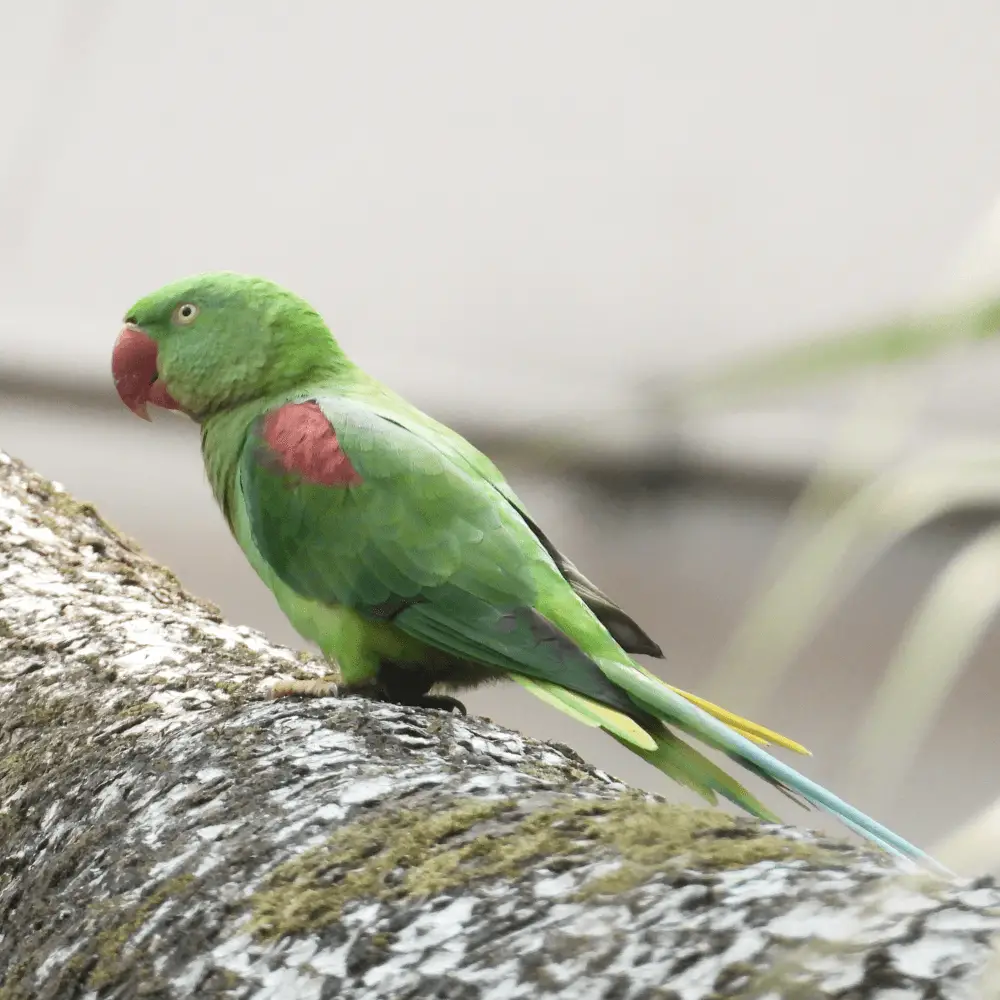
The Alexandrine parakeet has a habitat that extends to south and southeast Asia, from Pakistan and Nepal, south to Sri Lanka, and east to Vietnam, with the strain, is found in different regions, as it was found in several countries, including Bahrain, Iran, Turkey, the United Arab Emirates and Yemen, and it has been spotted in European cities, including That’s London and Amsterdam.
The Alexandrine parakeet is found in a variety of habitats, including wet and dry forests, cultivated areas, mangroves, and deserts, and is found at altitudes of about 900 meters.
Alexandrine parakeet male and female
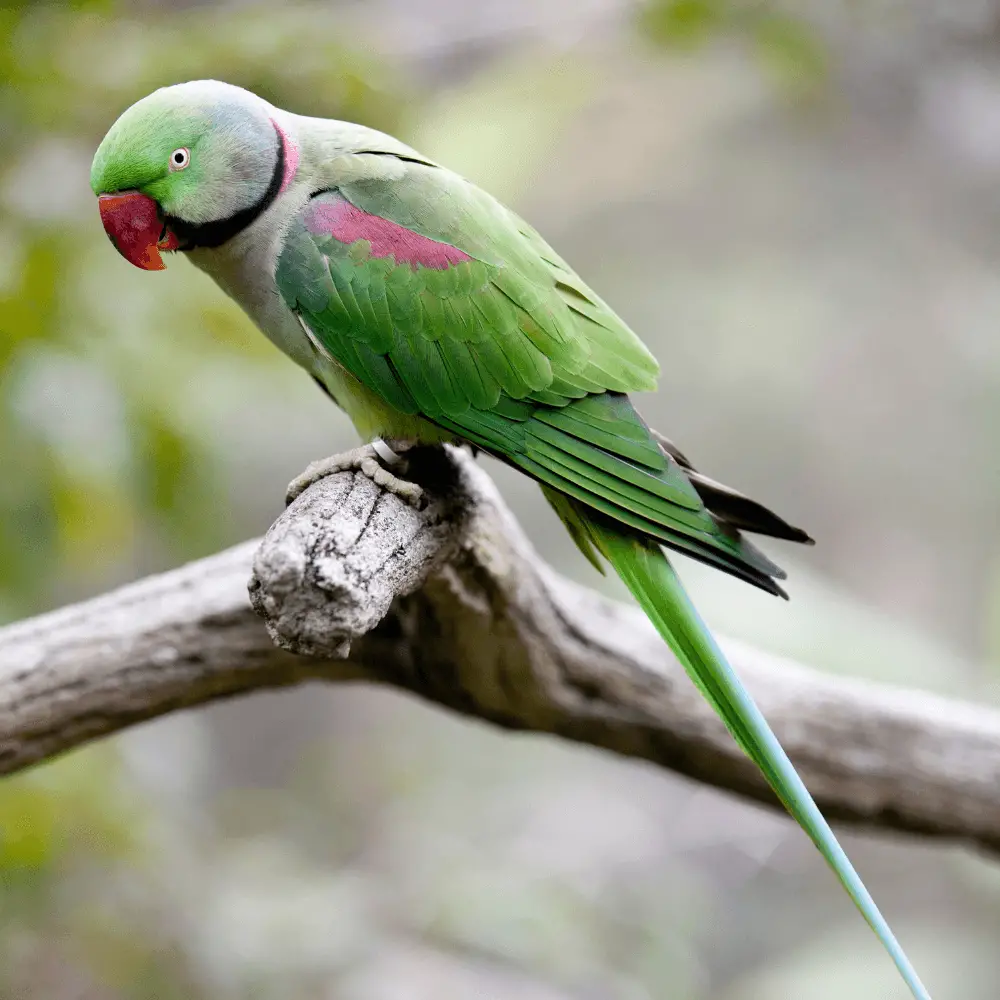
- Adult males have black neck rings, and large pink bands on their nares (the back of the neck),
- Often the males display only a small band of gray above the darker, darker pink neck.
- Adult females do not have black feathers in their rings, nor do they have pink feathers in their rings.
- Adult females frequently show neck-ring shades that are anywhere between light and gray shades, females do not have true black feathers in the neck rings.
- As with all pedigree parrot species, young Nepalese parrots have shorter plumage, and therefore shorter tails, than adults.
- Adult plumage is usually achieved between 18-30 months of age, so it can be difficult to definitively determine the sex of a Nepalese parrot before it is 36 months old.
Alexandrine parakeet breeding
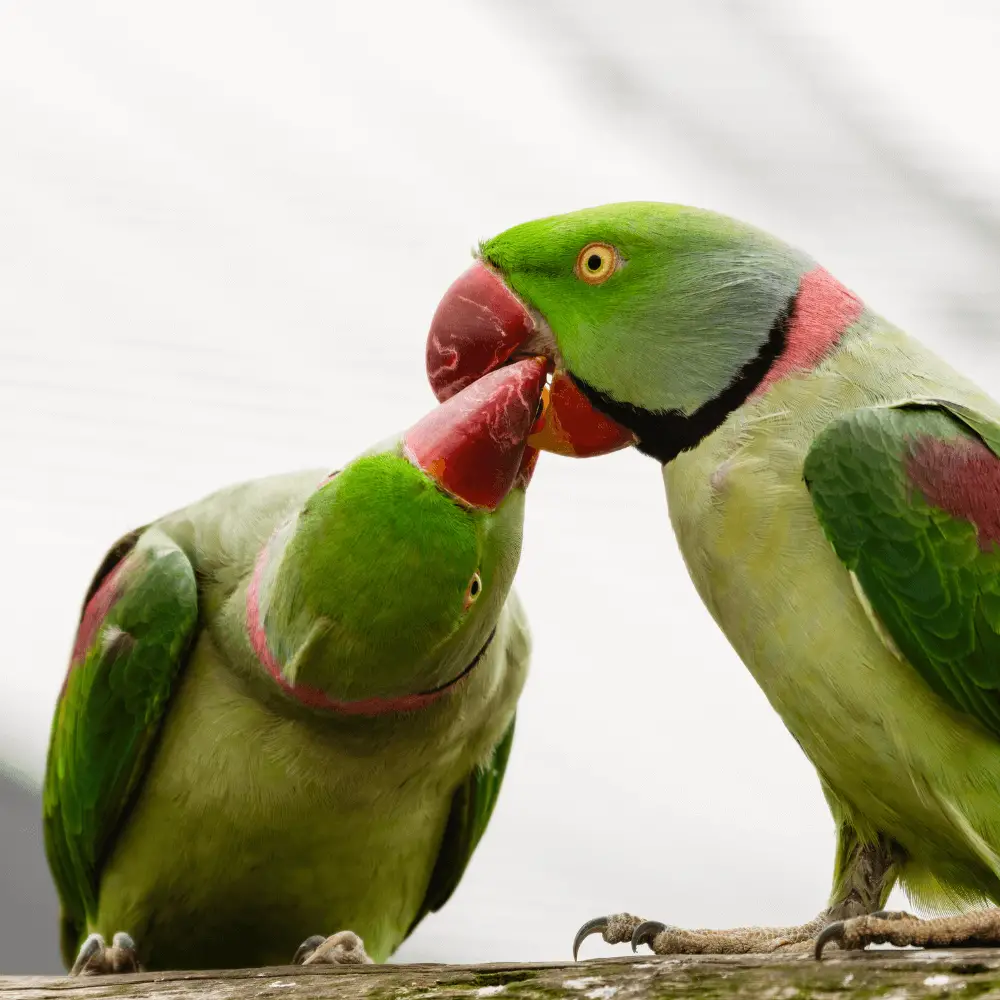
Alexandrine parrots mate between November and April, and a female Nepalese parrot often lays between 2 to 4 eggs.
They also hatch after about 24 days, and the alexandrine parakeet’s lifespan is about 30 years.
Alexandrine parakeet food
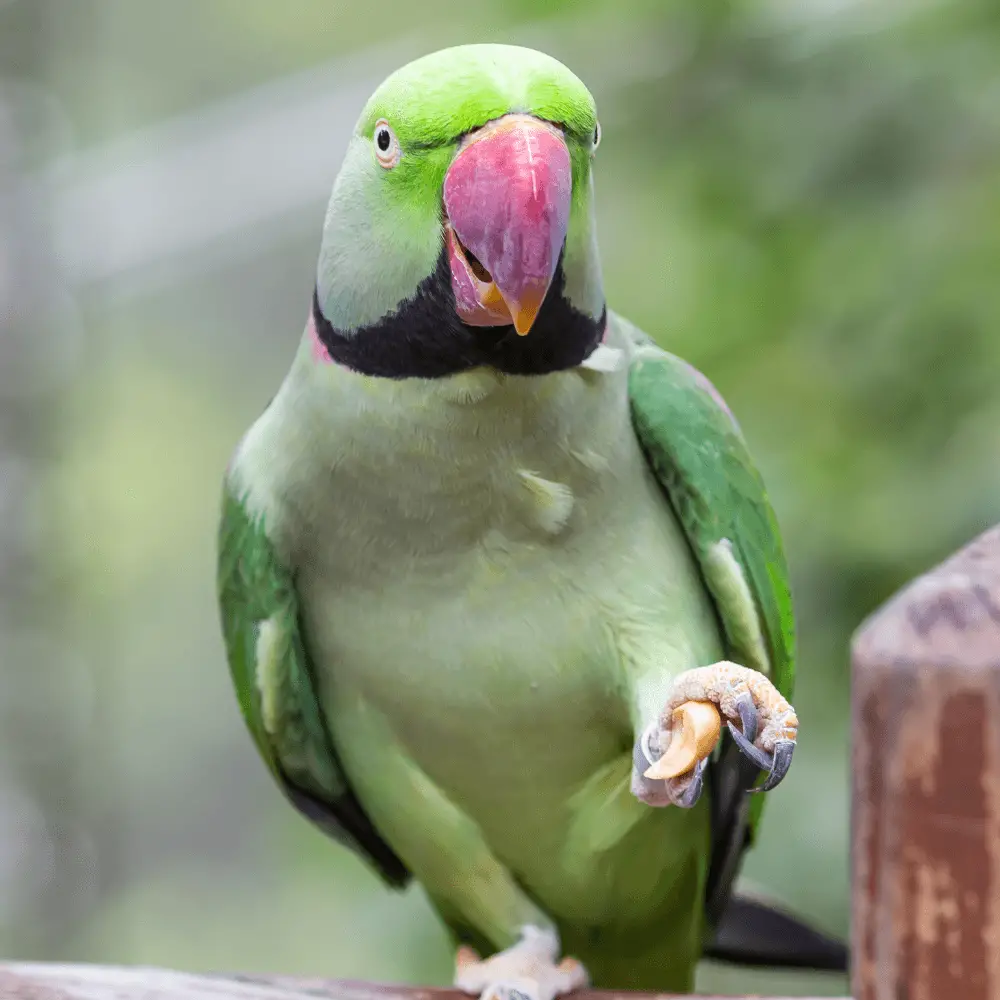
Alexandrine parakeet feeds on a variety of seeds, flowers, buds, nectar, and fruits. It is usually found in small flocks, but larger groups may gather in abundance or communal roosts at dusk.
Alexandrine parakeet behavior
The Alexandrine parakeet, due to its range of behavioral traits that are considered desirable to bird keepers, including being playful, energetic, and capable of mimicry, has been one of the most popular animals in the pet trade. Although trading is prohibited in some areas, exploitation is still common and wild species are being reduced
How many types of Alexandrine parrots are there?
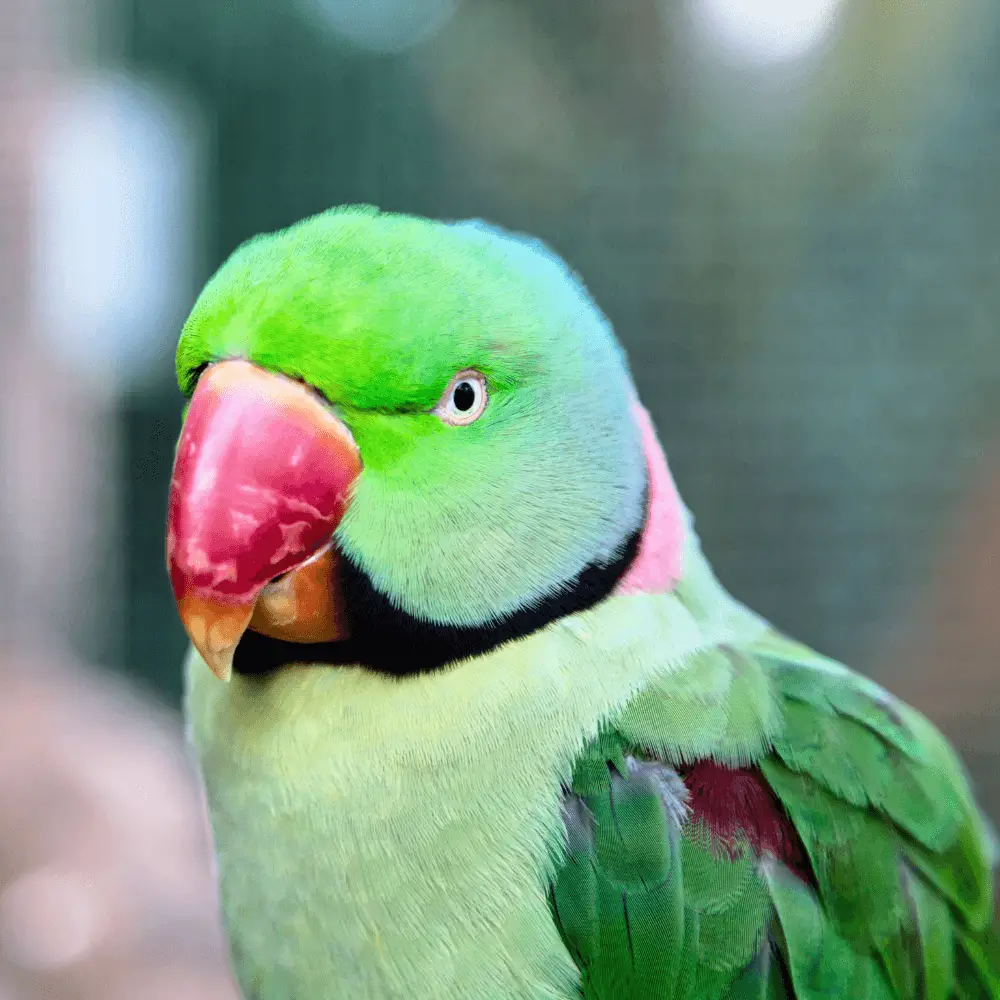
The Alexandrine parakeet is divided into five main subspecies, which are distinguished by slight differences in colors and are as follows:
Nepalese Alexandrine Parakeet
It is the largest native parrot species in the world, with a length of 62 cm, with a wingspan of 20-24 cm, very similar to other species however.
The feathers on the chest and abdomen in both sexes are white and gray, while the back of the neck is blue.
This species is distributed in eastern Afghanistan, southern and eastern regions of western Pakistan, northern and central India, Nepal, Bhutan, and eastern Pakistan to Assam.
Nepalese parakeet on Andaman Island
It is very similar to the Nepalese Alexandrine Parrot but slightly smaller, with a wingspan of 20 to 22 cm.
The beak is also larger and more massive, and the color of the shoulder is red.
Nepalese Indo-Burmese parakeet
It is yellowish-green in color, with a blue tinge at the back of the neck. It is 58 cm long and has a wingspan of 19 to 22 cm.
The Burmese Nepalese parrot lives in Cachar, Assam, and Burma, south of Amherst.
Siamese Alexandrine parakeet
It is the smallest of the species, with a length of 56 cm and a wingspan of 20 cm. The top of the head is bright blue, and the legs are yellow.
This species lives in Vietnam, Cambodia, Laos, and northern and eastern Thailand.

